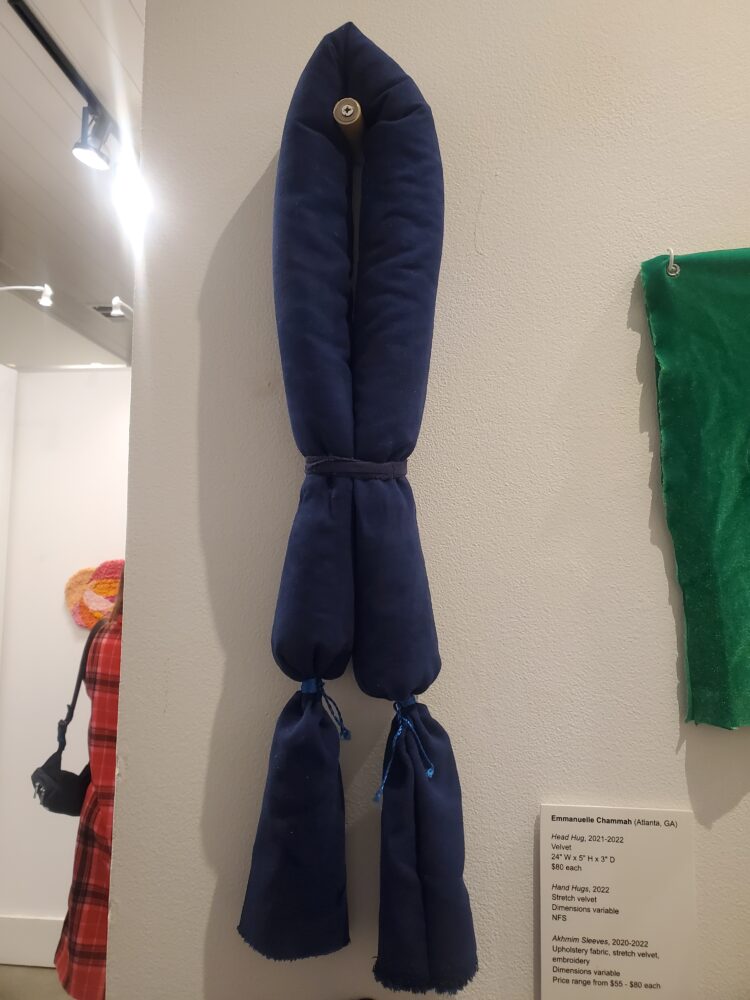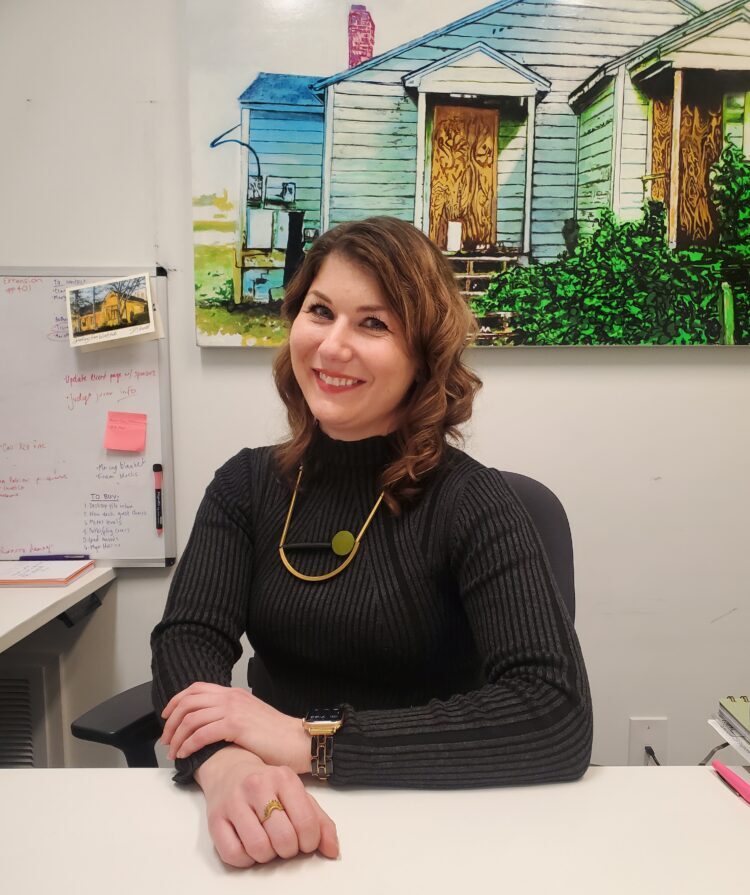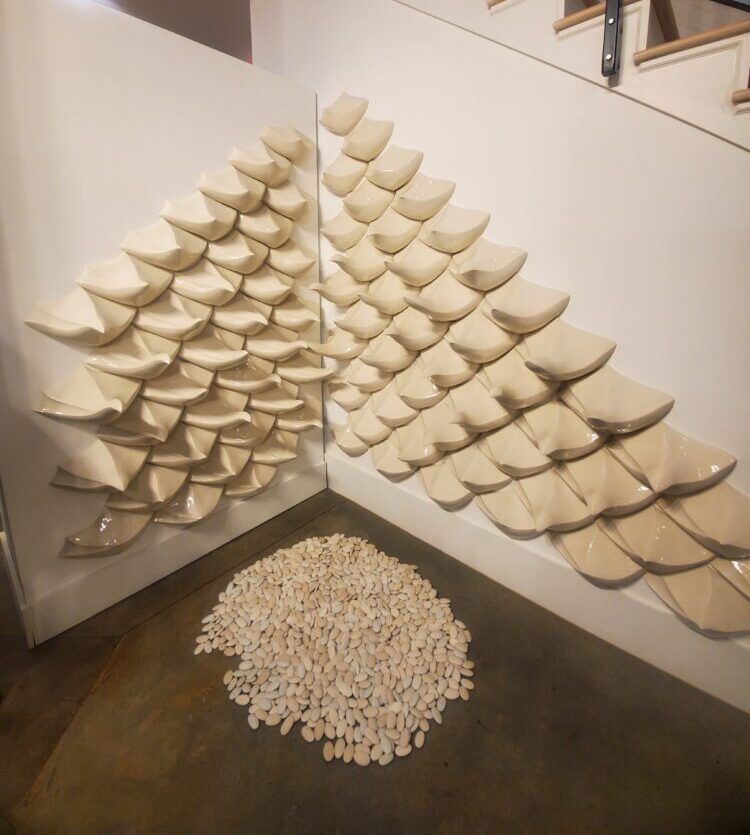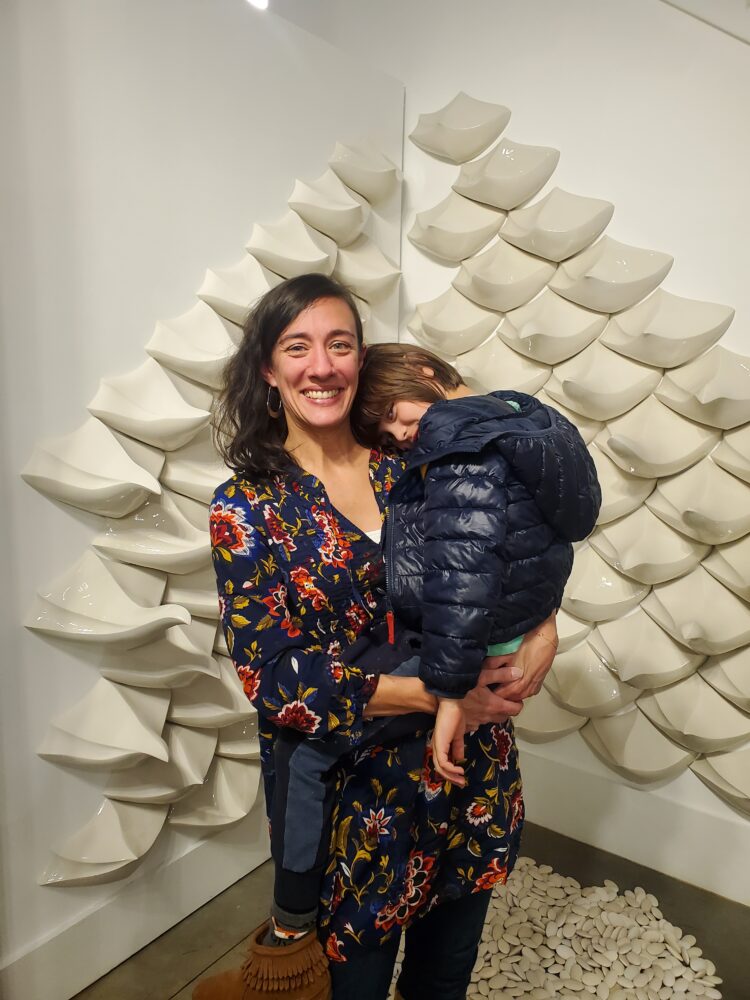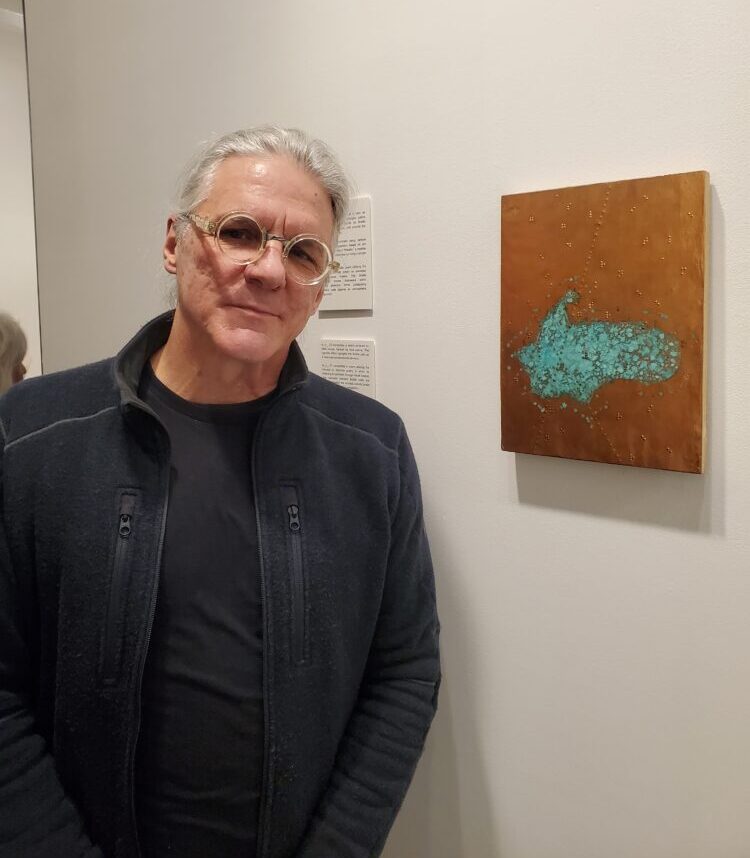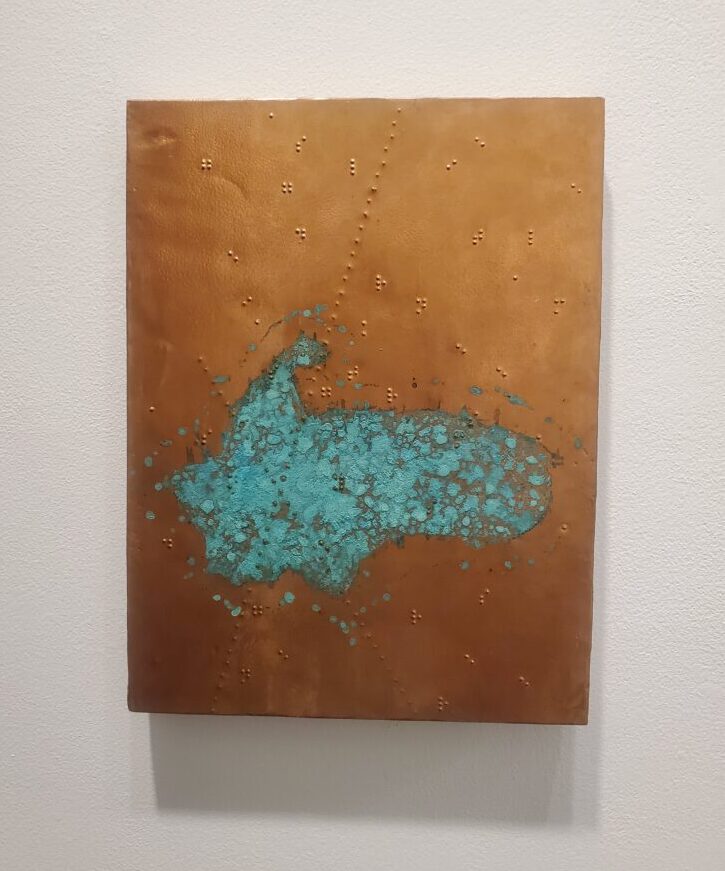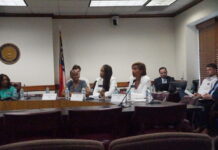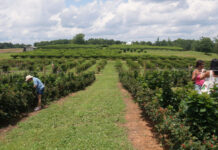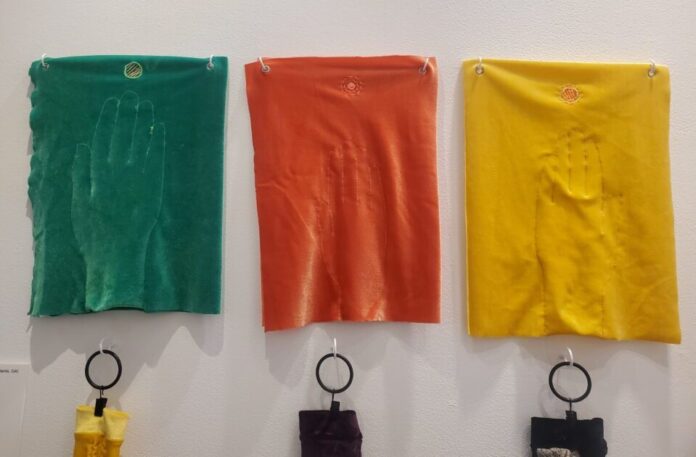
You can look … but you can’t touch. That’s the rule at just about every museum we ever visit.
But it’s all very different at one exhibition in Woodstock, Georgia. If you’ve ever felt the urge to touch any of the art you see in a museum, this local art exhibition will grant your wish.
The Reeves House Visual Arts Center in Woodstock brought in artists from around the country to display art that the visitor needs to touch to understand for its “Please Touch the Art” exhibition.
Emmanuele Chammah is an Atlanta artist who creates textile sculptures that are usually wearable and serve some kind of sensory purpose. Chammah started making sensory art when she made a weighted vest for her friend’s autistic daughter who liked the feeling of compression.
“For me, all of these pieces are in a way practical because they have a sensory aspect to them,” Chammah said. “The head hugs for example, you’re meant to wear them when you’re stressed or feeling like things are a lot. You can cover your eyes and ears with it so it also deprives you of your sensory surroundings.”
Chammah said that her artwork is inspired by her own worries.
“I have had a lot of anxiety and had different ways of treating it but wanted to avoid medicating,” Chammah said. “I kind of imagine a future where it’s okay to express that you’re more sensitive or that you need extra protection.”
Nicole Lampl curated the exhibition. Lampl knew she wanted to work with Chammah but was skeptical because of the nature of artist’s work. That’s when Lampl had the idea to curate an exhibition where you are encouraged to touch all the art.
“It’s really complicated to show artwork that you’re allowed to touch next to artwork that you don’t want people to touch,” Lampl said. “It kind of opens the floodgates and people want to touch everything.”
Lampl has been a curator at the Center since it first opened in 2021 and is always trying to plan extraordinary exhibitions.
“I think that the core idea of thinking of new ways for people to interact with the work is foundational to the program that we are building here,” Lampl said.
Another artist, Rachel Garceau, said that when people view her piece “Methods of Embrace,” she is encouraging them to slow down, take more time, and process their emotions.
This piece was originally displayed at an exhibition in a small shed in Atlanta, but Garceau wanted to create an intimate space where it feels like the sculpture is embracing the viewer. Inspiration struck when she saw an oddly shaped pine cone while visiting California.
“So, I found this particular pine cone in California that was unlike a pine cone,” Garceau said. “It’s a very large pine cone, and the scales sort of grew out in these really dramatic ways, sort of like tendril alien looking type things, and I was just really taken by it.”
When creating “Methods of Embrace,” Garceau wanted it to be a solitary interaction because it was originally displayed in the corner of a small shed. The pebbles add elements of touch as you are supposed to take off your shoes and feel them with your feet.
Another artist who attended the opening, Kenn Kotara, hopes that his “Braille Series” inspires guests to try and create their own interpretation of the messages on each panel.
“All my work is very structural and is almost geometrically influenced,” Kotara said. “When I’m looking at the internet I come across braille. As a graphic designer, I work with typography, so I like the idea of using a type that isn’t recognizable or readable by most people. I also like the ambiguity of it being code, so people recognize it, but don’t understand what it says.”
Kotara’s first panel is based on the book “Walden” by transcendentalist writer Henry David Thoreau who recorded his thoughts about living in Massachusetts.
“In the 1700s he [Thoreau] decided he didn’t really like the populated cities, so he decided he would go out in this wilderness area, and he built his own cabin, and lived there for a year,” Kotara said. “One of his chapters was about the black ants and the red ants having a war and he likened that to humanity. Why are we fighting all the time? Why do we really need to fight?”
The description next to Kotara’s art pieces reads “depicted Walden pond in plan as seen from above… as letters, also called cells, drift around the pond’s negative space.”
“You would have to go through this and try to figure out how to transcribe it,” Kotara said. “These are single letters. It’s like a puzzle, and how does a person come in and say ‘What’s Kenn saying here?”
These pieces and several more will be available to view for free at The Reeves House Visual Arts Center in Woodstock until March 24th.
For more from Fresh Take Georgia and the latest updates, follow us on Facebook and Twitter.

